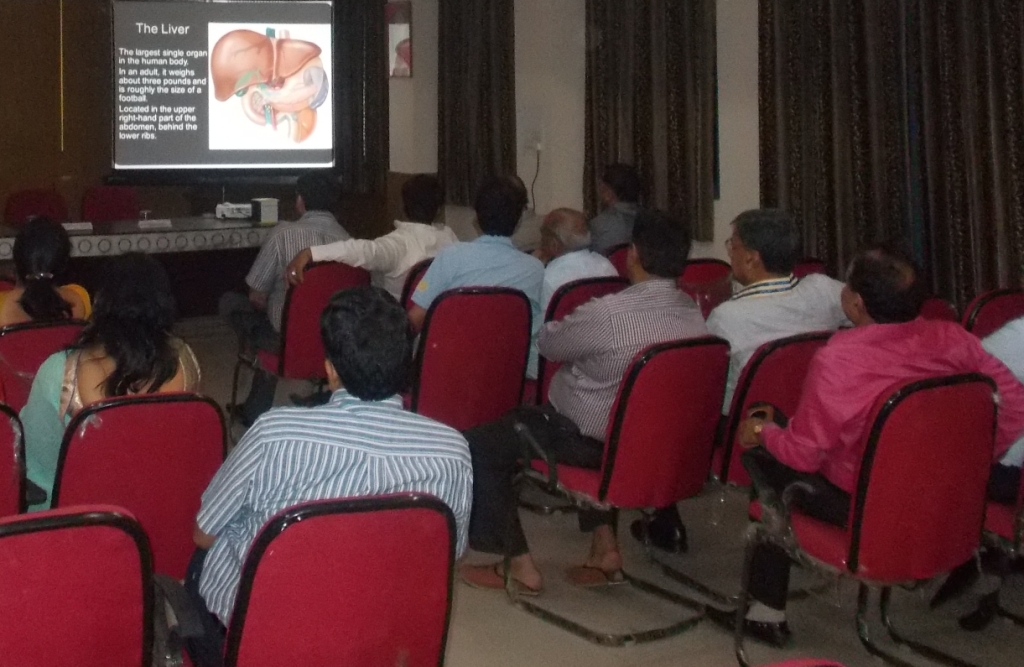- In India, approximately, 9-32% general population is suffering from NAFLD
- Obesity is the prime cause for NALFD. Other factors includes diabetes, genetic inheritance, medical side effects and Hyperlipidemia

Ghaziabad , 19 April 2016: With the dramatic shift of the lifestyles towards sedentary and urban ways of living, while there is a surge in the cardiovascular diseases, the increasing incidences of non-alcoholic fatty liver diseases (NAFLD)has also emerged as an important health concern.
As the name suggests, non-alcoholic fatty liver diseases are caused due to factors others than excessive consumption of alcohol. Primarily, NAFLD occur due to fat build up in the liver from conditions such as over eating, intake of oils and fatty foods. The condition is diagnosable when more than 10 percent of the liver is fat. While the condition has no symptoms, it does not pose much complication. However, if the condition is left untreated for a longer time, it can scar the liver and progress to develop the serious form known as nonalcoholic steatohepatitis, which can further cause impairment of the liver functioning, also known as liver failure.
As per National Center for Biotechnology Information (NCBI), U.S., the prevalence of NAFLD in general Indian population is estimated to be 9-32%, with higher incidence rate amongst obese and diabetic patients.
On the occasion of World Liver Day, doctors at Columbia Asia Hospitals, discuss on the causes and factors responsible for the rise in NAFLD in a session. Owing to the adoption of western styled food habits, there is an increase in the consumption of fats and oils, thereby increasing the incidences of obesity. Resultantly, NAFLD has surged to become more common than alcohol related liver diseases.
“The rise in incidence of NAFLD has certainly emerged as an important concern. The condition poses a major health risk as the consistent deposition of fat in the liver tends to significantly impacts on overall liver-related mortality and cause severe health condition. Owing to the sedentary lifestyle and unhealthy eating culture, the prevalence of NAFLD in urban region is high as compared to that in the rural areas. While alcohol is the major cause of fat deposition in liver, in case of NAFLD, wrong dietary habits, high intake of fats and less consumption of protein become the triggering factors. Increasing consumption of high carb low fibre diet, reduced intake of vegetables and fruits, accompanied by low level of physical activity are responsible for cholesterol imbalance, leading to health issues such as overweight and obesity that have further raises the weight of fats in the liver. NFALD have the potential to causes liver damage, leading to liver failure in 10-15 per cent patients,” said Dr Manish Kak, Consultant Gastroenterolgy, Columbia Asia hospital-Ghaziabad
NAFLD encompass a wide of range of fatty liver diseases that occur due to causes other than alcohol. Some of the common non- alcoholic fatty liver diseases are steatosis which is the deposition of fat in the liver and cirrhosis that is defined as irreversible scarring of liver. Symptoms such as loss of appetite, nausea, vomiting, abdominal pain, yellowing of the skin could be indicative of non-alcoholic fatty liver disease.
Primarily, NAFLD is a condition where the body creates too much fat which gets stored in the liver cells and accumulates to form fatty liver disease. Body tends to create this excess fat either due to frequent intake of high-fat diet or slow metabolism of fats by the body. Besides obesity, hyperlipidemia, diabetes, genetic inheritance also lead to NAFLD.
“NAFLD occurs when the weight of excessive fats exceeds the limit of 5-10% more than the weight of the organ. While obesity is one the prime factors, diabetes is also an important triggering factor for the condition. Besides, hyperlipidemic, genetic inheritance, rapid weight loss, side effects of certain medications could also lead to NALFD. Often, the disease remains silently present in a patient, and does not have any major expressive symptoms in the initial period. However, symptoms such as appetite loss, nausea, vomiting, abdominal pain, yellowing of the skin are indicative of presence of NAFLD,” said Dr Manish Kak.
Since NAFLD is all about excess fat, therefore a healthy eating and nutritious diet becomes the first and foremost step towards its prevention. Notably, NAFLD is reversible condition and can be treated with correction in eating and lifestyle habits. Therefore, it becomes important to follow the prescribed medicines and instruction of the doctor. For patients with diabetes and high cholesterol, it is important to take medicine and keep a regular check on levels of their critical indicators. Besides, a schedule to spend at least 30 minutes on exercise and work out can also help in resolving the issue of excessive fats in the body by maintaining a healthy weight.
About Columbia Asia Hospitals Pvt. Ltd.
Columbia Asia Hospitals Pvt. Ltd. is the only company in India to utilize 100% foreign direct investment (FDI) route in the hospital sector.
About Columbia Asia Group of Companies
The Columbia Asia Group is owned by more than 150 private equity companies, fund management organizations and individual investors. The group currently operates eleven facilities in India and has presence in Ahmedabad, Bangalore, Gurgaon, Ghaziabad, Kolkata, Mysore, Patiala and Pune. The company also operates hospitals in Malaysia (11), Vietnam (3), and Indonesia (3). The Indian management operations are managed from its office in Bangalore
